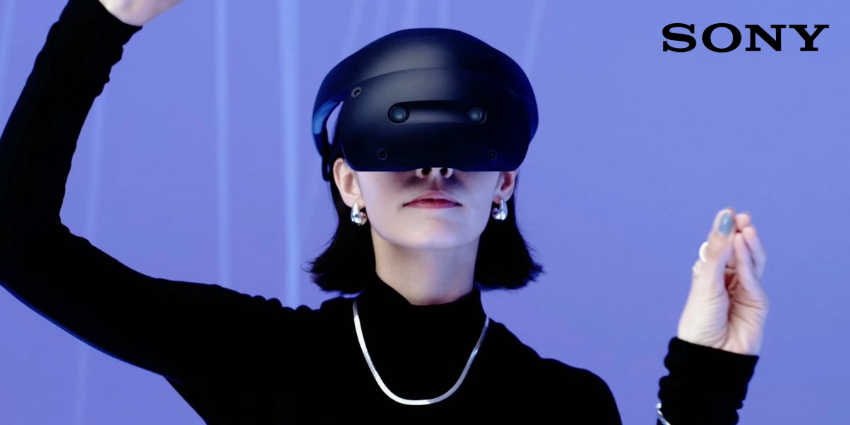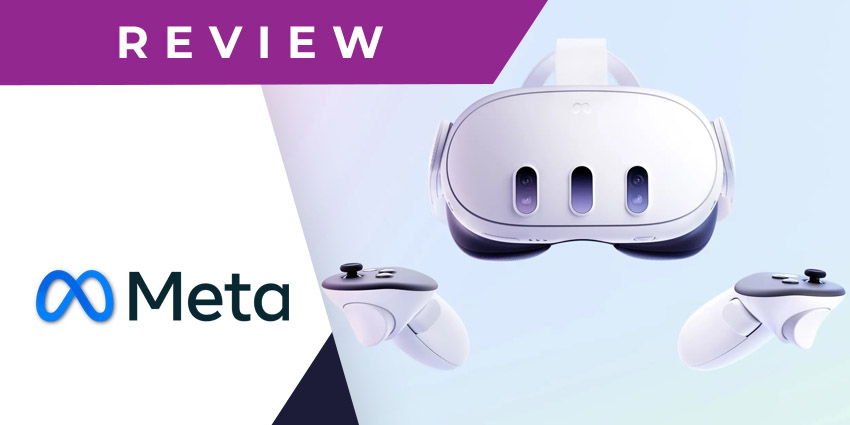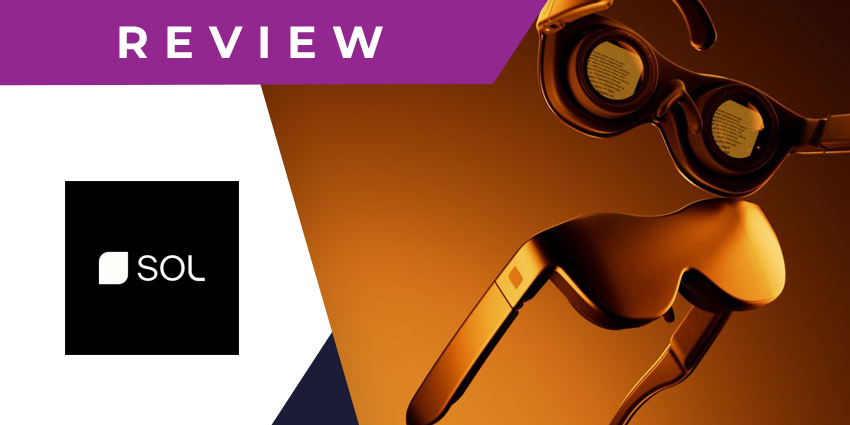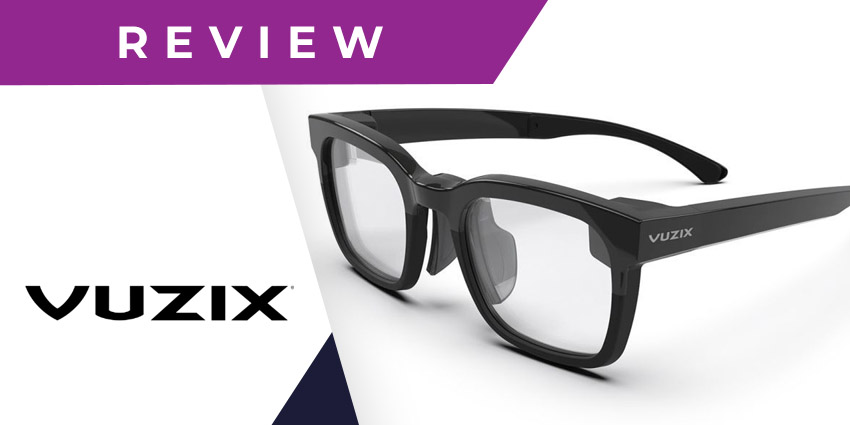The Pimax Crystal Light, by far one of the most affordable headsets ever developed by Pimax, is now available to consumers in regions worldwide. Announced in April 2024, this headset offered Pimax a new way to expand it’s market reach.
For a while now, Pimax has mostly been associated with high-end, enterprise-grade extended reality headsets. It’s devices deliver some of the highest visual fidelity around, competing with market leaders like the Apple Vision Pro. However, with price tags starting above the $1k mark, these headsets weren’t the most accessible to everyday consumers and small businesses.
So, is the Pimax Crystal Light the most exciting affordable headset to hit the market in the last year, or will it still lag behind contenders like the Meta Quest 3?
I put this PCVR device to the test to find out.
The Quick Verdict
The Pimax Crystal Light is an extremely affordable PCVR headset, combining phenomenal visual fidelity with excellent tracking capabilities. Although it lacks some core capabilities, like a full mixed reality mode and a built-in processor or battery for wireless gameplay, it has some unique benefits.
Pros:
- Exceptional visuals with 4K resolution
- High-performance refresh rate
- Foveated rendering
- 6DoF inside-out tracking and optional Lighthouse
- Affordable pricing
Cons:
- Very large, clunky design
- No wireless mode
- Very basic passthrough features
What is the Pimax Crystal Light? The Specs
The Pimax Crystal Light is a simpler version of the popular Pimax Crystal, a powerful 4K headset I reviewed last year. To make this device more affordable, Pimax removed a lot of extra features. For instance, there are no integrated fans, no heatsink, and no battery for cable-free play.
Unlike the Meta Quest 3, this is exclusively a PCVR headset. It needs to be tethered to a device (like your laptop or computer) at all times and doesn’t feature its own integrated Snapdragon processor.
Eliminating some of the built-in components that would allow for a “wireless” VR experience has enabled Pimax to retain some of the key features that make its headsets stand out, starting with the ultra-high resolution. Just like the Pimax Crystal, the Light version comes with an ultra-sharp 2880 x 2880 resolution per eye. You also still get an adjustable refresh rate of up to 120hz.
Here’s a quick look at the specs:
- 2880 x 2880 pixels per eye
- 35 PPD glass aspheric lenses
- Refresh rate of up to 120hz
- Foveated rendering
- 6DoF Inside-out tracking
- Integrated audio (with an included headphone jack)
- 2 microphones
- Customized Pimax PCVR processor
- Optional upscaling technology
- Optional local dimming
Pricing and Availability
One of the biggest standout features of the Pimax Crystal Light is its pricing. While the standard Pimax Crystal costs between $1,449, and $1,999 (depending on your chosen version), the Crystal Light is available for less than half the price.
There are three options to choose from, including:
- No Local Dimming: $699: This is the base model, including all the core features of the headset, as well as two basic controllers (similar to the Quest 2 controllers).
- Local dimming (headset only): $799: For an extra $100, you can add local dimming to the mix, but you’ll have to buy your controllers separately.
- Local dimming (with controllers): $899: For an extra $200, you’ll get both local dimming, and two Pimax controllers included in the kit.
Pimax Crystal Light Review: Design and Comfort
At a glance, the Crystal Light looks almost exactly the same as the standard Pimax Crystal. I’ve mentioned before that Pimax’s headsets are a lot bulkier than most VR and XR devices. They’re closer in style to huge wearables like the Varjo XR-4 than the Apple Vision Pro.
Unlike the standard Pimax Crystal, however, the Crystal Light is a lot more lightweight. Pimax has managed to shed around 310 grams from the design by removing the battery, power cable, DP extension code, IPD motors, and various other components while retaining visual fidelity.
Even with all of those components removed, however, the comfort level isn’t perfect. Since the front housing holds all of the internal tech you need to access VR, the weight distribution is a little off. The strap could be better too. It’s a stiff, flexible plastic strap that wraps around the side of your head, with a dial on the back you can adjust for a better fit.
Although the fit is reasonably good, you might find that the headset shifts and wobbles a little if you’re moving around a lot in VR. The Velcro strap on the top of the headset does improve the weight distribution a little, but it doesn’t offer the most comfortable experience.
Still, there are some good comfort factors too. For instance, you get a great amount of padding around the face plate to stop the plastic from digging into your face. You can also manually adjust your IPD, which is good for boosting overall clarity. Additionally, while Pimax doesn’t sell prescription lenses for the Light directly, I did find a few third-party vendors that offer them.
Visual Fidelity and Audio Performance
Unlike many VR headset vendors, which either use Fresnel lenses, or pancake lenses (the current top choice), Pimax has stuck with glass aspheric lenses for the Crystal Light. That does make some sense for a company so focused on visual fidelity.
Aspheric lenses are thinner, flatter, and lighter than traditional lenses, and they can offer better light penetration and clarity. Pancake lenses generally lose a lot of light when displaying an image through multiple layers. With aspheric lenses, Pimax has been able to achieve an excellent level of clarity and brightness. There’s no ghosting, no glare, and the 2880 x 2880 pixels per eye resolution allows for an ultra-crisp experience.
The field of view, which Pimax describes as “massive”, is a little variable. Although you can achieve an up to 130-degree diagonal FOV with this headset, what you actually get will depend on your head shape and how your eyes are positioned in relation to the lenses.
One nice extra touch is the addition of foveated rendering. The headset focuses on displaying images directly in your line of sight clearly, while reducing computing power consumption. If you opt for the more expensive headset, you’ll also get local dimming, which helps to improve the contrast and black levels in your images.
Like many of the VR headsets I’ve reviewed, the Pimax Crystal Light doesn’t offer the best audio. Although you do get a decent audio experience, and even integrated microphones so you can communicate in VR, the volume is a little low, and there’s not much bass.
However, you can plug in your own headphones with the integrated audio jack – I’m just not sure how comfortable or convenient that will be. After all, you’ve already got one cable tethering you to your computer to worry about.
The User Experience: Controllers and Performance
As a dedicated PCVR headset, the Pimax Crystal Light is pretty versatile. The integrated Pimax PCVR processor allows you to connect your headset to your computer or laptop, and experiment with a wide range of applications and software. Of course, the quality of your experience will depend on the computing power of whatever device you’re using.
As mentioned above, unlike the standard Pimax Crystal, this headset doesn’t include a Snapdragon XR2 processor or a battery, so you can’t use it as a standalone device. Like most PCVR headsets, this means you do get a bit of a clunky experience in VR, as you’re constantly navigating a cable attached to your headset.
Another key difference between the Crystal Light, and the Crystal, is that the Light version doesn’t include an eye-tracking module. However, it does feature 6DoF inside-out tracking. Cameras mounted on the top of the headset, and on the bottom ensure you can move around and interact with content using gestures, rather than relying solely on your controllers.
That’s a good thing in my opinion, since the controllers aren’t brilliant. They’re similar to the Quest 2 controllers, with their slightly annoying tracking rings. However, they are relatively responsive, and they feel quite ergonomic – if a little lightweight.
You can also access “Lighthouse”, which is a laser-based inside-out positional tracking system developed by Valve, if you want a more comprehensive tracking experience.
In terms of mixed reality, there’s a basic passthrough mode, but it only gives you a relatively grainy black-and-white image – nothing like what you’d get from the Apple Vision Pro or Meta Quest 3. I’d probably recommend using this headset exclusively for VR. If you’re looking for mixed reality, the Quest 3 will be a better choice.
Pimax Crystal Light Review: The Verdict
So, is the Pimax Crystal Light worth it? It’s certainly received a lot of positive feedback from early testers. I actually quite like the unique approach Pimax has taken to creating an “affordable headset”. Rather than asking customers to compromise on visual fidelity, they’ve maintained the exceptional displays they’re so well-known for.
Of course, this does mean that you’re missing out on a few features that other competitors would be able to offer, like a built-in battery and chip for wireless functionality. However, if you don’t mind being plugged into a computer at all times, the Pimax Crystal Light offers a great experience.
It’s ideal for simulation-style games and training apps, and offers some great tracking functionality. I do wish it was a little sleeker, and more comfortable to wear. Still, it’s definitely an affordable option for those who put visual experiences first when searching for VR headsets.
Whether the Pimax Crystal Light will outperform other affordable devices like the Meta Quest 3 remains to be seen, but I think this is an interesting step forward for the Pimax brand.







